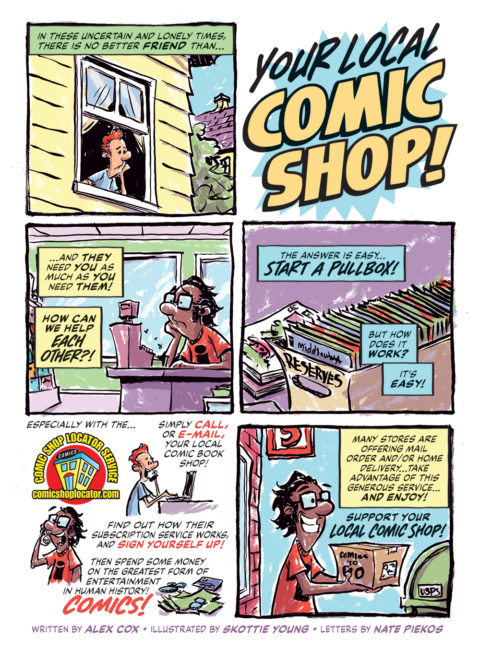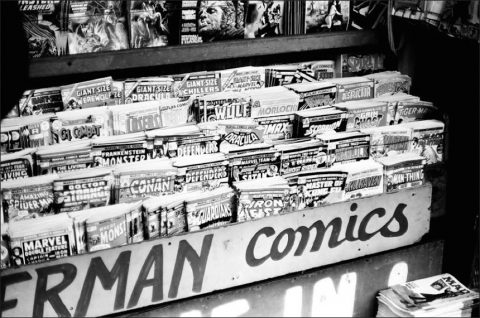Over March break my family was traveling in Ontario and I had an afternoon available to check out four local comic shops. I did an internet search for comic shops and came up with the four locations quickly; putting them on a map I decided my best route and put the four addresses in the GPS. This is a far cry from the old days of getting to the hotel and rifling through the yellow pages under “Books, Used” and then trying to find the addresses on a city map.
I wanted to stay as anonymous as possible since some of the shops participate in our Retailer Q feature, plus we’ve been mulling over a secret shopper kind of comic shop review and this gave me some things to look for. Before starting I made a list of things to look for: Canadian content, range of material, access to merchandise, knowledge of staff.
Personally I was looking for old or discounted hardcovers: material that’s out of print or off the beaten path. You know, the kind of thing that’s been sitting on a shelf for ten years. I’m earnestly trying to track down Graphitti Designs hardcovers from the 1980s and 90s; great material and relatively low demand. If the store has been in business that long there’s a good chance you’ll come across some real treasures.
Back to the shopping criteria. As I went from store to store it became apparent these shops had evolved to serve their markets; small minimal store to behemoth packed with everything you could think of. At the end of the day I realized access to merchandise is a big deal.
When I say access I mean just that: if you’re a consumer browsing a store then you want to be able to see, scrutinize and possibly handle everything for sale. One location had their back issues behind the counter in thick stacks: there may have been over one hundred books there but I could only see the top of each pile. Another store had a third of the store behind the counter, loaded with all kinds of wonderful looking things but customers weren’t allowed in that area. My favourite shop had everything I could want in a comic store but the lighting was dim and the wall comics were so high up on the wall I was straining my neck to see what was there and had to request each be taken down to get any idea of condition. If I can’t get to it as a customer I can’t buy it.
Be assured every retailer asked me what I was looking for, and since I wanted old and obscure hardcovers told me that they didn’t have it, but targeting only specific requests eliminates a lot of sales opportunities. When I arrived at a shop that had a well staged large selection I was able to browse away, picking up a stack of books I didn’t know I wanted.
Back to secret shopping and rating comic stores. Is it worth it? Or should we stick with highlighting the cream of the crop in our Progressive Comic Shops feature?





I think there is room for both IMO.
I think a secret review idea is neat. You never know what kind of gems you may discover to share with the readers. Although every time you’re in my shop from now on I’ll be under the impression you’re not-so-secret shopping us.
Retailing high dollar back issues is always difficult. Consumers want access to products and yes the chance of a sale goes up dramatically when consumers can freely browse.
But when you are talking about stacks of $200 comics, the retailer has to balance that with the very real risk of theft, fraud, and damage.
Surprisingly in my experience the biggest problem isn’t even with dishonest people out to cheat you. I have watched far too many careless customers destroy or degrade valuable comics to ever question another retailer who wants to keep the “good stuff” behind the counter.
It makes sense to keep expensive books safe but how does a customer know what you have if they’re not displayed? Stacks of books behind the counter won’t make any sales, and if I ask to see the stack then the retailer is tied up safeguarding those books.